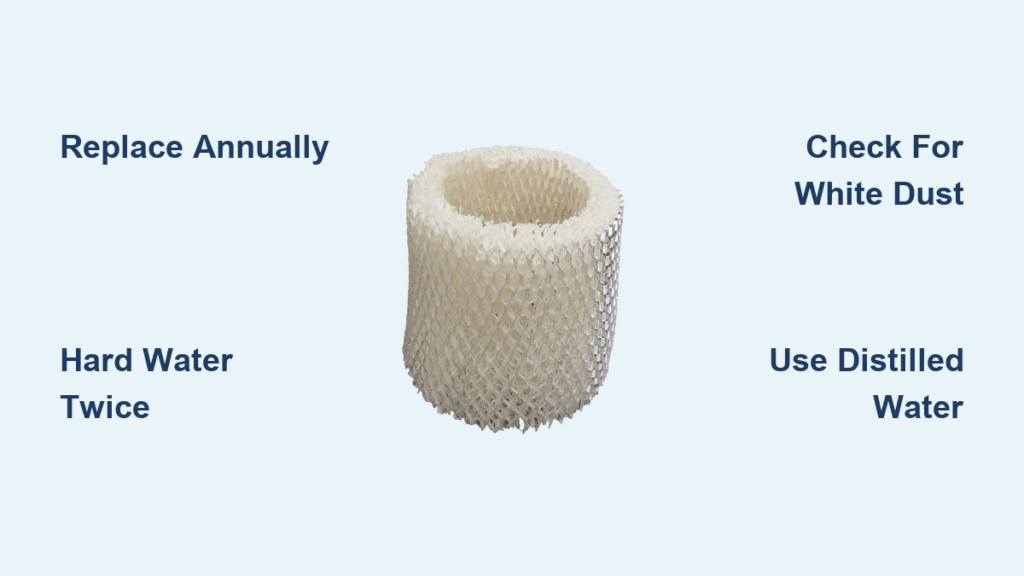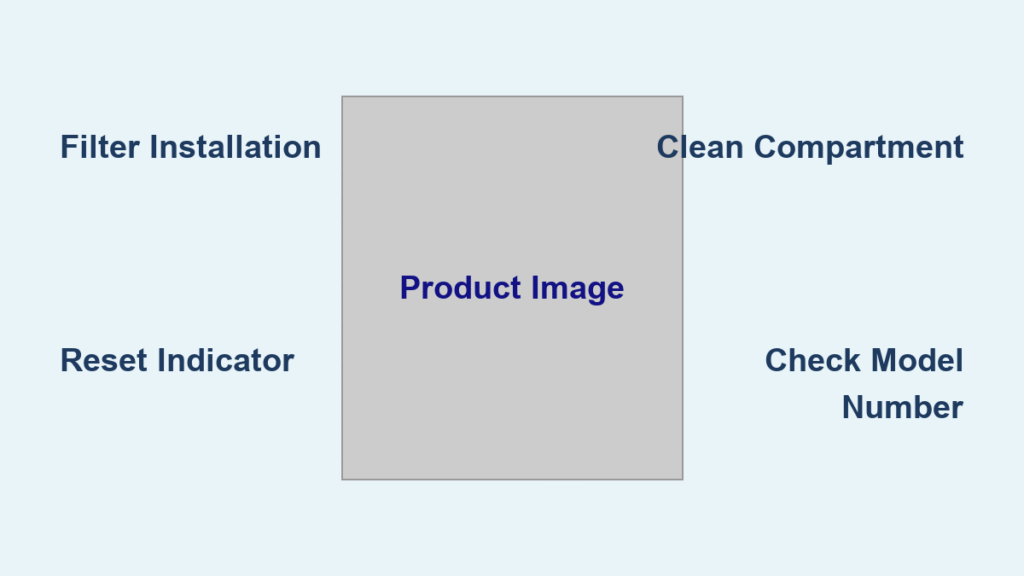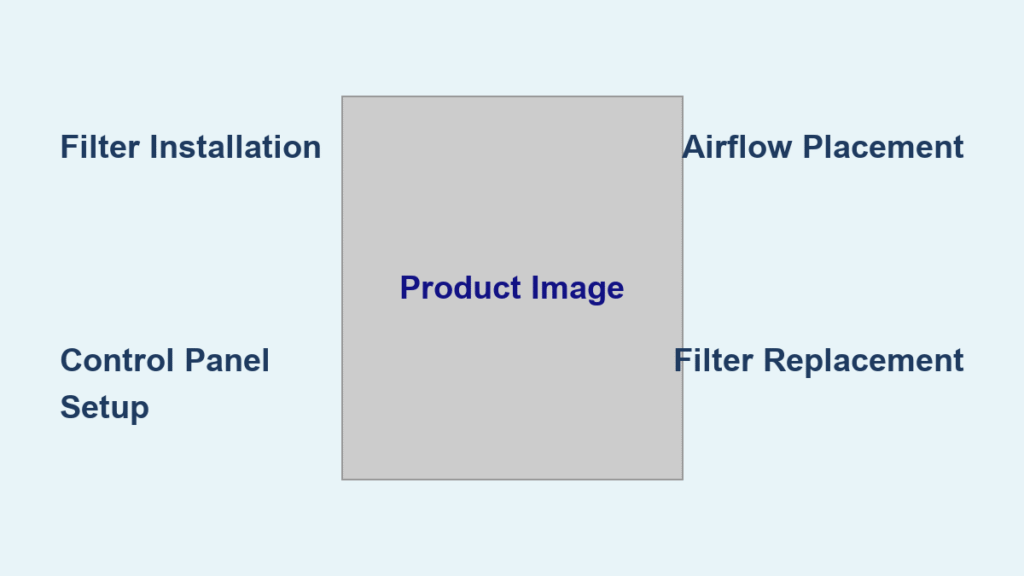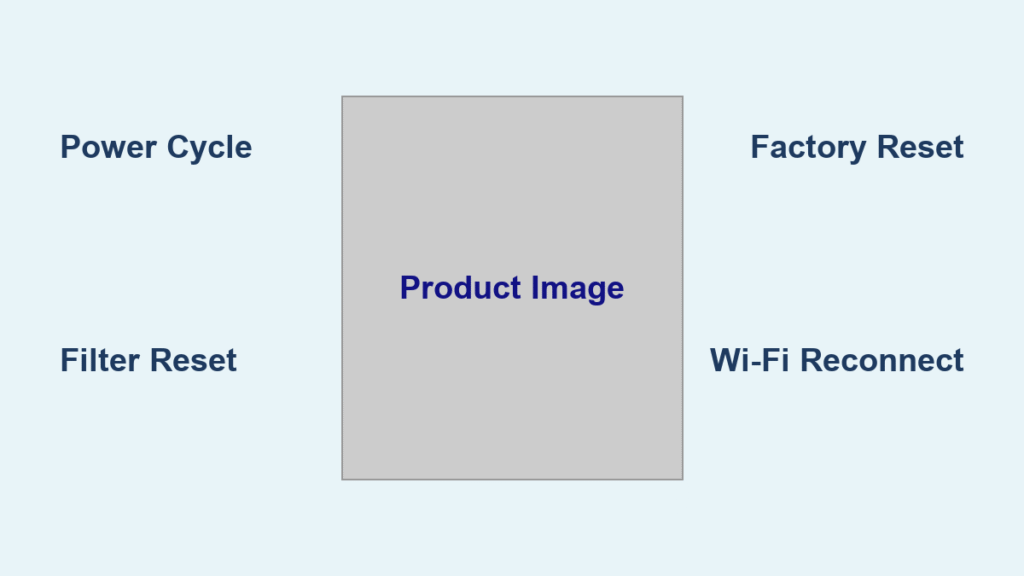Your humidifier filter works silently behind the scenes, transforming dry winter air into comfortable moisture—until it doesn’t. When that familiar white dust suddenly coats your furniture or your skin feels uncomfortably tight despite running the unit, you’ve likely missed a critical filter change. Most homeowners discover this problem too late, not realizing that ignoring how often to change humidifier filter components directly impacts air quality, equipment longevity, and even respiratory health. The truth? There’s no universal calendar date that applies to every household. Your specific humidifier model, local water hardness, pet presence, and usage patterns create a unique replacement schedule you can’t afford to overlook.
This guide cuts through the confusion with model-specific timelines, hard-water adjustments, and the unmistakable warning signs screaming for immediate action. You’ll learn why your neighbor in Georgetown replaces filters twice a season while your Mississauga counterpart manages with annual swaps, and how to stretch filter life without risking mold growth. Most importantly, you’ll never again wonder how often to change humidifier filter components when white dust or musty odors appear.
Furnace Humidifier Filter Replacement Timelines

Whole-house humidifier filters demand strategic scheduling—replace furnace humidifier filters annually as your baseline, but only if you live in moderate water areas like Mississauga with average winter usage. Time this swap for early fall, right before firing up your heating system. This prevents mineral buildup from compromising your first cold snaps. Skipping this step forces your HVAC to work 30% harder while delivering 60% less humidity, spiking energy bills before you even notice reduced comfort.
Hard Water Regions Require Double Replacements
If your water leaves chalky residue on showerheads (common in Georgetown), change furnace humidifier filters twice per heating season. The AprilAire 45 Water Panel, for example, clogs in just 3-4 months due to rapid mineral accumulation. When you spot white crust on the evaporator pad by December, replace it immediately—waiting until spring guarantees drainage clogs and bacterial growth. Hard water literally cuts filter lifespan in half, so mark February on your calendar for a mid-season swap regardless of usage hours.
Digital Monitoring Beats Calendar Guesswork
Newer models like Honeywell HE360A eliminate scheduling stress with smart indicator lights. These track actual runtime hours, not just dates, flashing amber when mineral saturation hits 80%. Don’t ignore this warning—mineral crystallization accelerates exponentially once begun. Reset the counter after each replacement, and pair it with your annual HVAC maintenance for foolproof coordination.
Portable Humidifier Filter Schedules by Usage

Large Room Units Demand Seasonal Changes
For 500+ sq ft evaporative humidifiers (like Honeywell HCM350W), replace wick filters four times yearly—once per season. These paper filters pull water through a massive surface area, trapping airborne particles that accelerate clogging. Heavy users running 8+ hours daily must inspect monthly; replace immediately if the filter turns rigid or develops yellow streaks. Waiting beyond quarterly intervals risks white dust emission as minerals bypass the saturated wick.
Small Units Need Different Strategies
Compact models often skip traditional filters entirely. For ceramic-filter units (e.g., TaoTronics TT-AH016), rinse filters every 30 uses under warm water—no replacements needed unless cracked. Aromatherapy pads can be cleaned with vinegar and reused indefinitely. Never assume all portables follow the same rules: check your manual for model-specific guidance before establishing your how often to change humidifier filter routine.
Usage-Based Timing That Actually Works
Light users (2-3 hours daily) can stretch replacements to every three months, but continuous operation demands monthly swaps. Brands like Canopy simplify this with built-in filter lights signaling replacement at 5-7 weeks. Track your runtime: if you run the unit 12+ hours daily during polar vortexes, replace filters at 4 weeks—not 8.
Water Quality and Lifestyle Accelerators
Hard Water Cuts Filter Life by 50%
Your showerhead’s white crust is a dead giveaway: if minerals coat fixtures, they’re destroying your humidifier filter twice as fast. Switching to distilled water extends filter life by 40-60%, paying for itself through fewer replacements. In hard water zones, treat “annual” furnace filters as bi-annual and portable wicks as monthly during peak use.
Pet and Smoke Households Need 30-50% More Frequent Swaps
Pet dander and cigarette smoke create a sticky film that traps debris, overwhelming filters rapidly. If you have shedding dogs or indoor smokers, replace filters 30-50% more often than standard guidelines. For furnace units, that means every 8 months instead of 12; for portable wicks, monthly instead of quarterly. Weekly HEPA vacuuming reduces airborne particles, slowing clog formation.
Critical Warning Signs You’re Overdue
Visual Red Flags Requiring Immediate Action
A healthy filter feels flexible and looks uniformly pale. When it turns rock-hard with brown streaks throughout or develops chalky white mineral deposits, replace your humidifier filter immediately. Don’t attempt cleaning—saturated wicks can’t be restored. For furnace units, visible mold on the intake vent means the filter has been overdue for weeks.
Performance and Health Emergency Indicators
If your hygrometer reads below 30% humidity despite constant operation, or white dust coats surfaces near the unit, mineral breakthrough is contaminating your air. Musty odors when the humidifier starts indicate active mold growth in the filter. These aren’t minor inconveniences—they’re health hazards triggering respiratory flare-ups, especially in children. Don’t wait for the next scheduled swap; replace filters the same day you notice these signs.
Proven Filter Life Extension Tactics
Water Selection That Prevents Buildup
Use distilled or demineralized water exclusively—it’s the single most effective way to extend filter life. While tap water costs nothing, the minerals it contains destroy filters 2x faster. For furnace humidifiers, this switch can make annual replacements last the full heating season even in moderately hard water areas. The slight cost premium pays for itself through avoided filter replacements and reduced energy waste.
Weekly Maintenance Preventing Permanent Damage
Every Sunday, power down your portable unit and let the filter air-dry for 24 hours. This prevents mineral crystallization and mold growth during downtime. For furnace systems, wipe the housing with a 50/50 vinegar solution during filter changes to dissolve early buildup. Never skip this—it takes 10 minutes but prevents irreversible scaling.
Step-by-Step Replacement Process
Furnace Filter Swap in 7 Minutes
- Power down completely—turn off furnace AND humidifier control
- Access the pad—slide open the AprilAire cover or unclip Honeywell’s fasteners
- Disconnect water line—gently pull the plastic tube if blocking the pad
- Remove old pad—note color-coded “top” indicators for correct orientation
- Clean housing—wipe interior with vinegar solution (never use bleach)
- Install new filter—insert with arrows pointing toward airflow
- Test drainage—run unit for 5 minutes to confirm no leaks
Portable Unit Quick Change Checklist
Verify exact filter dimensions (portables use proprietary sizes—measure before ordering). For ceramic filters, submerge in white vinegar for 5 minutes, rinse thoroughly, and air-dry 24 hours before reinstalling. Never force a filter into place; misalignment causes leaks and uneven saturation.
Neglect Consequences That Cost You Dearly
Health Risks From Bacterial Bloom
Stagnant water in saturated filters breeds bacteria within 48 hours. Mold spores then circulate through your entire home, triggering asthma attacks and allergy surges. Children inhale 50% more air per pound than adults—making them especially vulnerable to contaminated humidifier output. A single overdue filter can turn your comfort device into a health hazard.
Equipment Damage Requiring Costly Repairs
Mineral buildup doesn’t stop at the filter—it migrates into drainage tubes and motor housings. This creates clogs that flood basements or force compressors to overwork, potentially cutting your humidifier’s lifespan in half. Repairing a clogged AprilAire distributor costs $150+, while a $20 filter swap prevents this entirely.
Cost-Saving Replacement Strategies
Subscription Services Eliminate Forgetfulness
Sign up for automatic deliveries like Canopy’s 6-week filter program—they ship replacements before you need them, often with 15% discounts. These services track usage patterns, adjusting delivery frequency based on your climate and water hardness. No more guessing or emergency store runs when white dust appears.
Seasonal Bulk Buying for Furnace Units
Purchase furnace humidifier filters during fall HVAC sales (September-October) when retailers discount 20-30%. Store extras in original packaging in a dry basement—properly stored pads last 2 years. Coordinate replacements with your annual furnace tune-up; many HVAC companies include filter swaps in maintenance packages for $50 less than standalone service calls.
Final Takeaway: Your how often to change humidifier filter schedule must adapt to local conditions—not generic manufacturer claims. Set digital reminders based on your water hardness (use the USGS water hardness map), then adjust when white dust appears or humidity readings drop. For furnace units, sync replacements with your heating season start; for portables, track runtime religiously. By acting before performance dips, you’ll protect your family’s health, avoid $200+ repairs, and keep that comforting moisture flowing all winter long. Your lungs—and your wallet—will feel the difference immediately.

